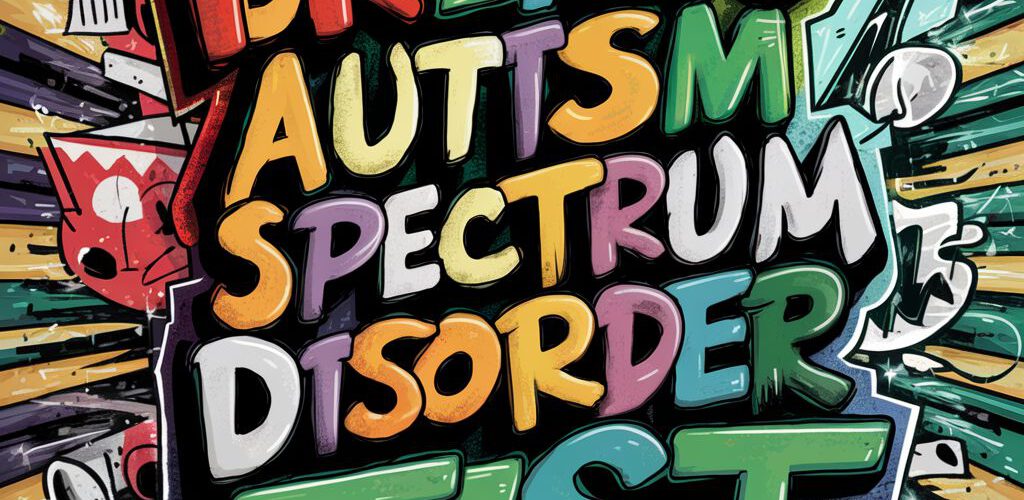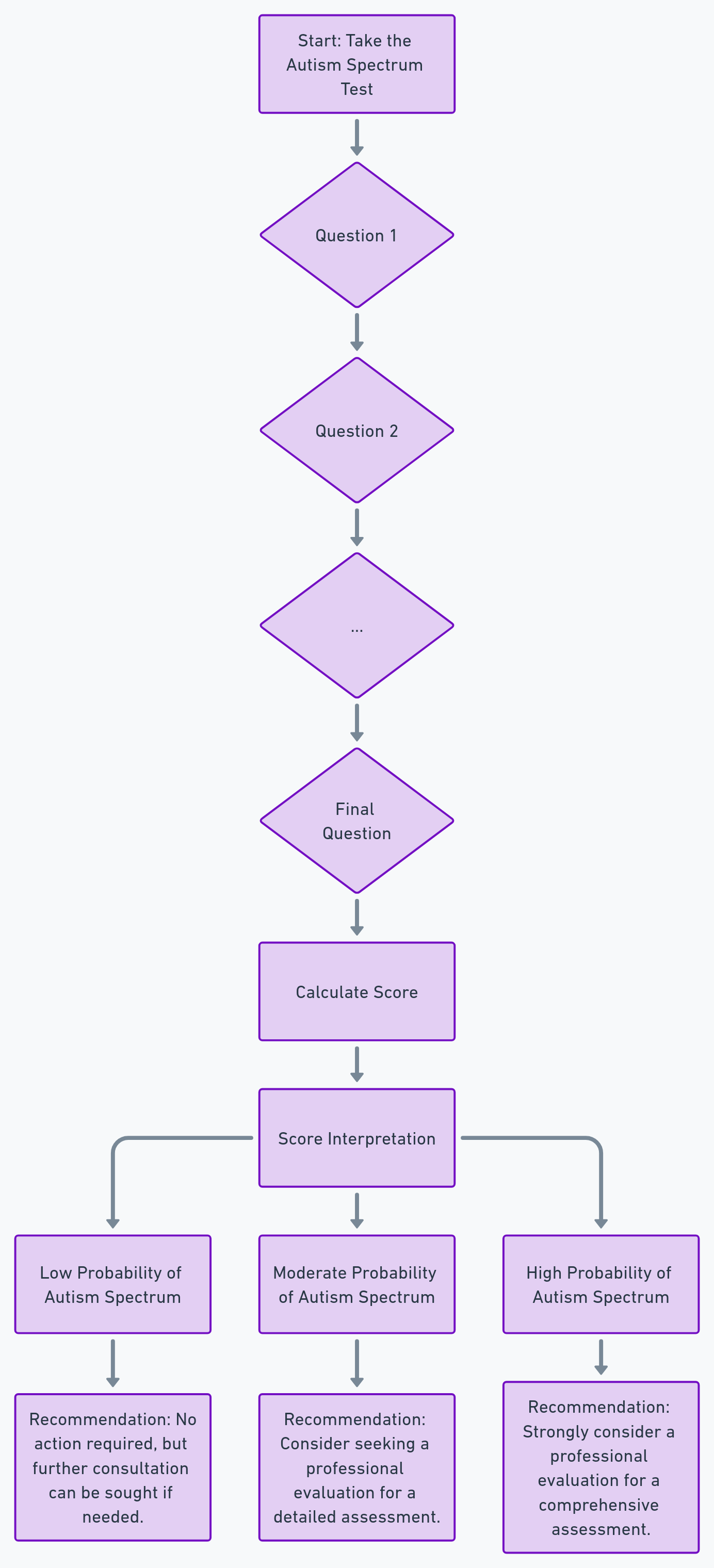Understanding the IDRlabs Autism Spectrum Disorder Test: An In-Depth Look

- What is the IDRlabs Autism Spectrum Test?
- Who Should Take the IDRlabs ASD Test?
- How Accurate is the IDRlabs Autism Test?
- What Do the IDRlabs ASD Test Scores Mean?
- Benefits of Taking the IDRlabs Autism Spectrum Test
- What Happens After Taking the IDRlabs Autism Test?
- The Development of the IDRlabs Autism Spectrum Test: A Look Behind the Scenes
- Additional Resources on Autism Spectrum Disorder
Have you come across the IDRlabs Autism Test and wonder if it’s a reliable way to explore potential autistic traits? You’re not alone. Many people turn to online screeners for initial insights. This guide dives deep into the IDRlabs Autism Spectrum Disorder test. It explores its questions and purpose. It also looks at what your results might – and might not – indicate. Before you proceed, understand that this tool is an informal screener, not a diagnostic instrument. Let’s explore what that means for you.
What is the IDRlabs Autism Spectrum Test?
The IDRlabs Autism Spectrum Disorder (ASD) test is a free online screening designed to measure autism traits in adults. Professional researchers developed it. The test consists of 24 questions. These questions evaluate various behaviors and characteristics associated with autism spectrum disorder.
The test is based on the Autism Spectrum Quotient (AQ) model, a self-administered questionnaire widely used for assessing autism traits. It aims to provide insight into an individual’s degree of autistic-like traits across five different domains:
- Social Skills
- Attention Switching
- Attention to Detail
- Communication
- Imagination
Upon completing the test, you receive a numerical score ranging from 0 to 24. You also receive an interpretation of where you likely fall on the autism spectrum based on that score.
Who Should Take the IDRlabs ASD Test?
While the IDRlabs autism test can be taken by anyone interested in exploring autism traits, it may be beneficial for:
- Adults seeking to understand their personalities/behaviors better
- Parents are concerned about their child’s development
- Individuals who have been told they may be on the autism spectrum
- Researchers or clinicians working in the autism field
It’s important to note that this test is not a comprehensive clinical diagnosis tool. A professional evaluation is required to determine if someone has autism spectrum disorder conclusively.
How Accurate is the IDRlabs Autism Test?
The IDRlabs autism test shows a strong statistical correlation with clinical ASD screening tools. However, its accuracy can be impacted by:
Response Bias
Like most self-report questionnaires, the test relies on honest and accurate responses from the test-taker. Misrepresentation of traits/behaviors affects score validity.
AQ Model Limitations
Here’s why the IDRlabs test shouldn’t be used for definitive diagnosis:
- Not Clinically Validated: The test needs formal validation through rigorous scientific studies required for clinical use.
- Self-Reporting Bias: Self-reported assessments can be influenced by personal interpretation and desire for a particular outcome.
- Comorbidity: Overlapping symptoms can exist between ASD and other conditions, leading to inaccurate results.
Online Setting
Taking the test online versus in-person with a professional can change the context and introduce distractions affecting responses.
So, while highly indicative, the IDRlabs autism test can’t replace proper clinical screening. It’s best used for self-exploration or as a starting point for further evaluation.
What Do the IDRlabs ASD Test Scores Mean?
Neurotypical Range: 0-10
A score in this range suggests few or no autism traits are present. Most neurotypical adults score somewhere in this range.
Broader Autism Phenotype Range: 11-21
Scoring in this range indicates several autism traits are present. However, they may or may not meet clinical criteria for ASD diagnosis. Further evaluation is recommended.
Autism Spectrum Range: 22-24
A high score in this range suggests a substantial likelihood of Autism Spectrum Disorder. An in-person diagnostic evaluation with a professional is highly advised.
Benefits of Taking the IDRlabs Autism Spectrum Test
Increased Self-Awareness
By highlighting autistic traits in adults, the IDRlabs test can bring self-understanding and validation around one’s experiences/behaviors.
Early Screening
The test provides an early screening method for parents or caregivers to identify potential autism risks for seeking professional evaluation.
Educational Tool
The test results, interpretations, and additional learning resources on the IDRlabs site provide valuable information. They serve as an introduction to Autism Spectrum Disorder.
Supportive Online Community
IDRlabs has an engaged community. Test-takers discuss results and share experiences. They find support related to being on the autism spectrum.
The IDRlabs Autism Spectrum Test is not a diagnostic tool. It offers critical benefits for learning about autism traits. It also aids self-discovery and seeking appropriate support.

Preparing for the Test
To ensure the most accurate results from the IDRlabs ASD test:
• Take it alone without distractions
Read each question carefully
• Answer honestly based on natural, day-to-day behaviors (not idealized versions)
• Avoid overthinking and choose the response closest to your experience
What Happens After Taking the IDRlabs Autism Test?
Once you’ve taken the IDRlabs ASD test, here are some constructive next steps to consider:
If You Scored in the Autism Spectrum Range
- Make an appointment for professional autism evaluation and potential diagnosis
- Look into autism support groups and resources in your area
- Continue learning about ASD through reputable organizations
- Share your results with close family/friends to build understanding
If You Scored in the Broader Autism Phenotype Range
- Keep monitoring your traits, and retake the test periodically
- Consider speaking to a mental health professional
- Focus on developing coping strategies for any challenging traits
- Be open about your experiences with trusted family/friends
If You Scored in the Neurotypical Range
- Look for ways to understand better and support autistic individuals
- Don’t rule out being on the spectrum if you strongly relate to some traits
- Reflect on the uniqueness of all human experiences and perspectives
No matter your results, the IDRlabs autism test provides a starting point for self-discovery. Use the insights gained to improve your self-awareness and overall well-being.
The Development of the IDRlabs Autism Spectrum Test: A Look Behind the Scenes
The IDRlabs Autism Spectrum Test is an online tool piques curiosity about autism traits. However, information regarding its specific development process remains limited. Here’s what we can glean:
Source of Information
Unfortunately, IDRlabs doesn’t publicly disclose detailed information regarding the test’s development. Their website primarily focuses on providing the test itself and interpreting the results.
What We Can Assume
While specifics are lacking, we can make some educated guesses about the test’s development:
- Basis in Existing Research: The test likely draws upon established research criteria for diagnosing Autism Spectrum Disorder (ASD). This research would encompass core areas like social interaction, communication, and repetitive behaviors.
- Development by Psychologists/Researchers: It’s reasonable to assume psychologists or researchers with expertise in ASD contributed to crafting the test questions.
- Potential for Unreleased Studies: There’s a possibility that IDRlabs conducted internal studies to assess the test’s effectiveness. However, these might be private.
The Importance of Transparency
Transparency in test development is crucial for users to understand its strengths and limitations. Ideally, the following information would be beneficial:
- Reference to Research: Citations of research used as the foundation for the test’s content.
- Sample Characteristics: Details about the population the test was piloted on during development.
- Validity and Reliability Data: Information on how well the test measures what it claims. This is known as validity. The test’s consistency in producing similar results is called reliability.
Additional Resources on Autism Spectrum Disorder
To continue learning about autism after taking the IDRlabs test, here are some recommended resources:
Organizations:
– Autism Society (www.autism-society.org)
– Autism Speaks (www.autismspeaks.org)
– Autism Research Institute (www.autism.com)
Books:
– “NeuroTribes” by Steve Silberman
– “The Autistic Brain” by Temple Grandin
– “The Reason I Jump” by Naoki Higashida
Online:
– Autism support subreddit (r/autism)
– Autistic Self Advocacy Network (www.autisticadvocacy.org)
– Autism research summaries (www.spectrumnews.org)
With understanding and acceptance, those on the autism spectrum can thrive and embrace their unique strengths and perspectives.


